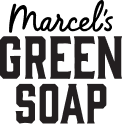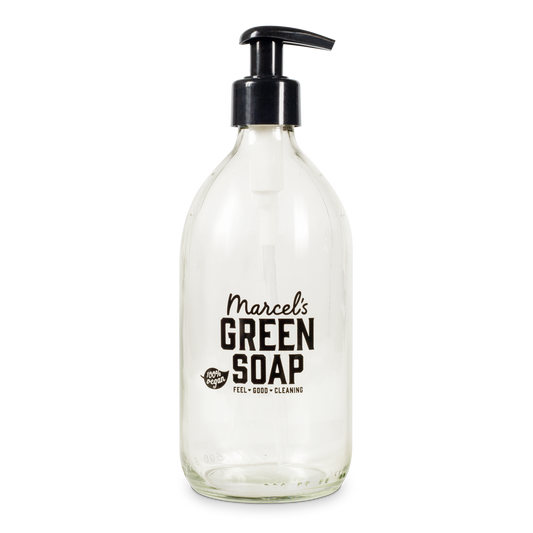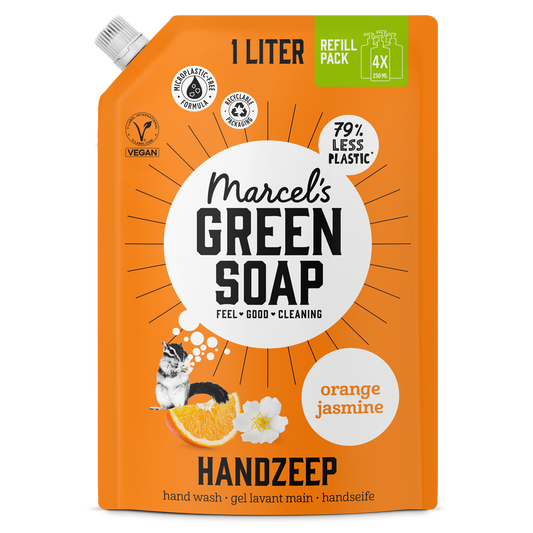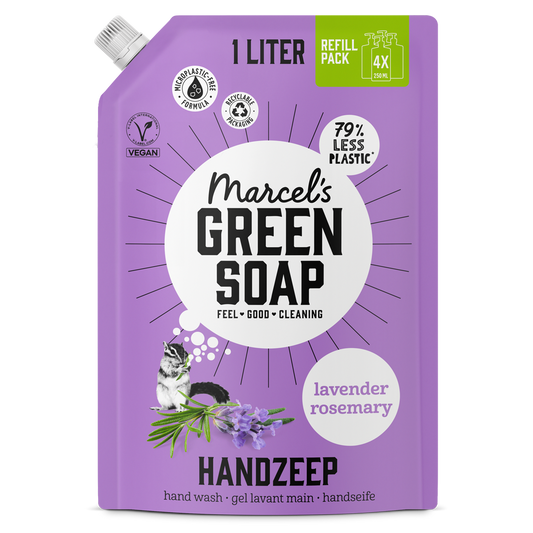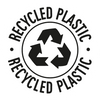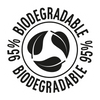As a fan of Marcel's Green Soap, you probably already know that all our bottles are made from 100% recycled plastic. With this we give used plastic a shiny new life. In addition to recycled packaging, there is also recyclable packaging. What exactly is the difference? And how do we work together to reduce the waste flow of (plastic) packaging?
A word about packaging
Did you know that you open an average of about 7 packages every day? And that 20% of all our waste therefore consists of packaging. So you would say: get rid of all packaging! But that is certainly not the solution, because packaging prevents a lot of food waste. It is better to look more consciously at the packaging you bring into your home. We increasingly see recycled or recyclable packaging on supermarket shelves. Good news, right?! Certainly, but these two concepts cause quite a bit of confusion. What is actually the difference?
RECYCLABLE OR RECYCLED?!
Recyclable or recycled: it may sound the same, but both terms have different meanings. Recycled packaging is made from previously used raw materials. These raw materials are obtained from collected waste that is sorted, cleaned and ground into granules (in the case of plastic) or pulped (in the case of cardboard) so that they can be made into 'new' things, such as the recycled packaging of Marcel's Green Soap . By making packaging from recycled materials, we reduce the amount of (plastic) waste and slow down the production of new plastic. On a roll!
Recyclable packaging is made from raw materials that can be reused. This means that the packaging is designed in such a way that a sorting machine can easily distinguish which materials have been used and that the materials are 'pure' enough to give them a new life (non-recyclable packaging contains too many different raw materials and additives). . Sounds good, but it says nothing about whether the packaging is actually recycled. If you throw this recyclable packaging in the residual waste, there is a good chance that it will still end up in the incinerator. So the ball is in the consumer's court. Fortunately, (most) recyclable packaging indicates which bin you should throw it in so that it can eventually return to the supermarket shelf as recycled packaging. Maybe even as Marcel's Green Soap shampoo bottle... And who wouldn't want that?! The sorting process often differs per municipality, so it is smart to look up how it is arranged in your area.
NEW! RECYCLABLE REFILL PACKAGES OF MARCEL'S GREEN SOAP
It is of course even better to limit the number of (plastic) packaging as much as possible. This can be done, among other things, by choosing recyclable packaging (where possible) - such as our deodorant stick, shampoo, conditioner and hand soap bars - and by using refill packaging more often. Because let's face it: it's quite a shame to throw away an empty bottle of Marcel's Green Soap hand soap, right? We therefore offer refill packaging for many of our products. This contains extra so you have a large supply. With refill packaging we save a lot of bottles and transport costs. That is better for the environment and your wallet. The refill packs are a lot cheaper in comparison, so you are extra encouraged to immediately buy a refill pack with a bottle of Marcel's Green Soap all-purpose cleaner or hand soap.
And now the best news: from January 2023, all our refill packaging will be recyclable. We couldn't start the new year in a better way! It is of course important that you throw the recyclable refill bags and our recycled packaging into the plastic waste after use so that we can give them a new life.
Sources: Natuurenmilieu.nl , Milieucentraal.nl

